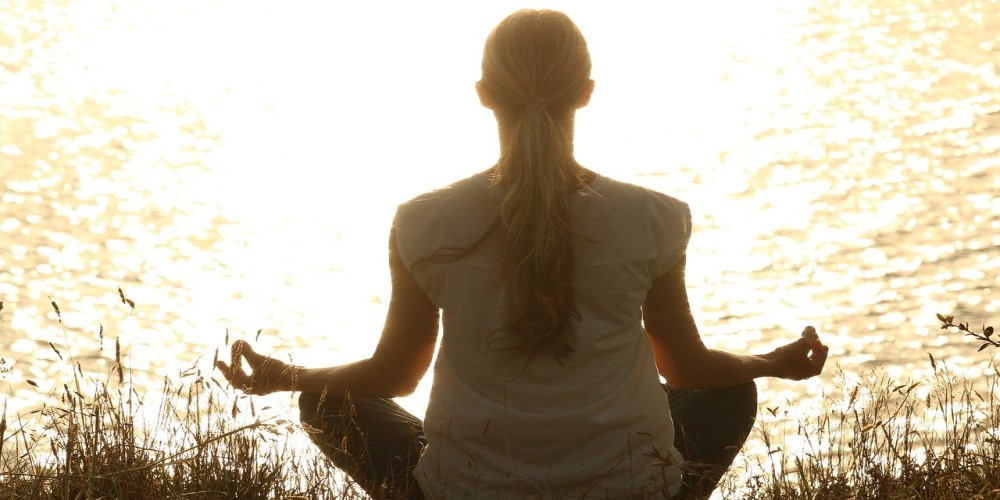3 Breathing Exercises to Manage Stress
These three breathing exercises to manage stress will help to regulate your emotional and physical response to stressfull situations. Just find some quiet 10 minutes during your day, when you can spend time with yourself and observe yourself. It could be after getting up, during your lunch break, before going to bed, or anytime you feel the ground slipping beneath your feet and waves of stress crashing over you.
One of the biggest benefits of breathing exercises is that you don’t have to go anywhere to practice and they don’t cost anything. They are a free tool which, if you learn to use it well, can be a great help to you in more difficult times.
All you will need is your lungs, determination and about 10-20 minutes to do the breathing exercise.
The Importance of Proper Breathing
Eastern cultures place great emphasis on proper breathing. One of the basic tenets of both Chinese and Indian medicine is that health and a calm mind can only be achieved through proper breathing. In our Western culture on the other side, this is not a prominent aspect of healing.
In fact, we urban people breathe very badly. Our respiratory rate is high on average. Not only is this bad for our health, but also for our mental state. With our sedentary lifestyles it is very common to perform chest breathing. It’s a shallow way of breathing without any depth. This kind of superficial breathing can make us frustrated, tense and anxious.
Improper posture and stress, certain emotional and mental states all greatly affect our breathing. To improve our breathing and with that also our health and emotional state, we can do some very simple breathing exercises.

Breathing Exercises for Stress Management
Stress affects the body, it flattens our breathing, we simply do not function properly. Fatigue and insomnia are inherent. But if you learn the following breathing exercises, you will always have a handy tool to reach for to regulate your stress response.
1. Kapalabhati Breathing – Skull Cleansing Breath
The Sanskrit word kapāla means “skull” or “forehead” and bhāti means “light, radiance”. During the exercise, the exhalation is active (from the abdomen and not from the chest), and inhalation is passive. So you exhale intensely, tensing the respiratory muscles and abdominal muscles, and then let the air flow freely as you inhale.
The breathing during this exercise is not deep. You work just with a small amount of air, as much as remains in the lungs after spontaneous exhalation.
This breathing exercise is cleansing and refreshing. If you do it in the morning right after waking up, you probably won’t need coffee anymore.
The exercise: Start in a comfortable, sitting position. The back should be straight so that the path of the breath is not blocked. Inhalation is soft and slow. You don’t have to take in too much air. The focus lies on exhalation, which is forceful. Breathing takes place through the nose and the lower abdomen is pulled in during exhalation.
Inhalation almost happens by itself, with natural breathing, and therefore the focus is on vigorous exhalation. If all is going well, the pace can be accelerated, with 1 inhalation-exhalation every 2 seconds with a total of 10 breaths.
Recommendation: It is advisable to exercise on an empty stomach or at least 3-4 hours after a meal.
2. 4-7-8 Breathing – Relaxing Breath
This breathing exercise helps to find balance and focus. It can be a great help if you have trouble falling asleep as it is a soothing breathing exercise. The pranayama exercises can be classified as one of the foundations of yoga practice. The purpose of pranayama breathing exercises is to gain control over breathing and thus over mind and body.
Exercise: Sit or lie down in a comfortable position. The eyes can be open or closed. Press the tip of your tongue to the top of the palate and open your mouth a crack. Exhale until you run out of air.
Then close your mouth and inhale through your nose for 4 counts. Then keep the air inside for 7 counts. Exhale for 8 counts, completely draining the air from your lungs.
Repeat at least 4 times or till you can feel yourself entering a more relaxed state.
3. Progressive Muscle Relaxation
The progressive muscle relaxation method works best in a sitting position. Be it at home, in an office chair, or even sitting in the car. Exercising by consciously observing each muscle group and then squeezing and relaxing helps with new blood flow and air flow from the top of the head to the toes. Squeeze and inhale at the same time.
Exercise: Close your eyes, then focus on stretching and then relaxing different muscle groups. Do this exercise all over your body, from head to toe. We begin to stretch the legs, toes, then the knees, thighs, buttocks, chest, back, arms, hands, neck, face, jaw, eyes. Squeeze through them one by one for 2-3 seconds, then loosen. Breathing should be deep and slow throughout the exercise.
Extra tip: Combine the rhythm of the muscle relaxation with the rhythm of your breathing. When squeezing, inhale, hold, then release when exhaling.
If you experience any discomfort, let the practice rest for a while and then return to it later.
One of the goals of the exercises is to get a better feeling for which part of your body has developed muscle tension. However, the deeply relaxed state of the whole body primarily has a calming effect on the nervous system. And the nervous system controls heart function, breathing, blood pressure, digestion, and metabolism, among other things.
Our breathing is one of the best defenses against daily stress and sudden anger. But it is also a great tool for fatigue and anxiety which is always at hand. These breathing exercises are a great part of a healthy lifestyle. If we master and actively practice the art of breathing, we will soon experience better a well-being and a calmer state of mind.
Adapted from “3 légzőgyakorlat, amely segít a stressz kezelésében”/ Viktoria Gazda on yogayogi.hu
 English
English magyar
magyar